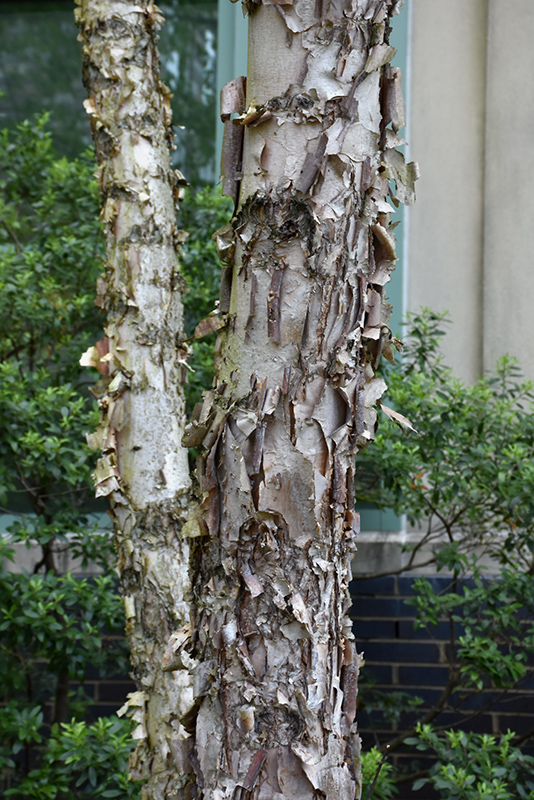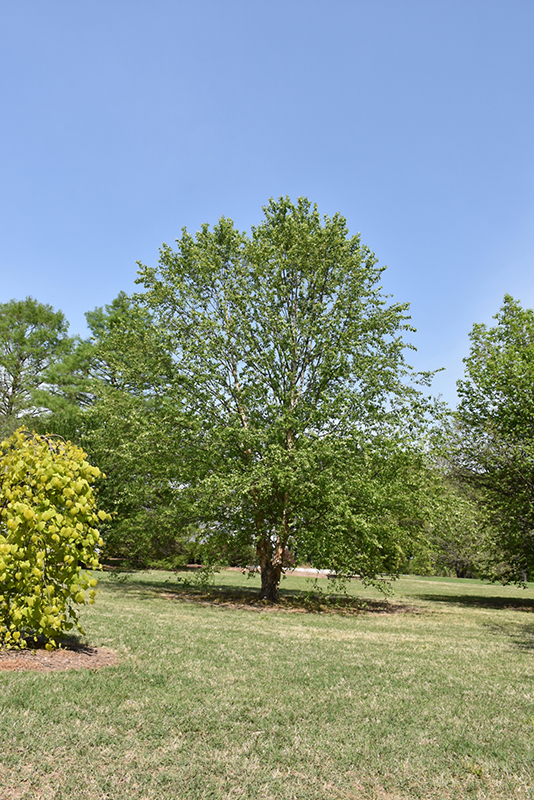Dura Heat River Birch
Betula nigra 'Dura Heat'
Height: 50 feet
Spread: 45 feet
Sunlight:
![]()
Hardiness Zone: 4a
Other Names: Red Birch
Description:
This selection is valued for its stunning bark, with white, brown and tan colors all peeling from mature trunks, denser crown and more heat tolerant than the species; good fall color; requires acidic soil, susceptible to chlorosis in alkaline soils
Ornamental Features
Dura Heat River Birch features subtle chartreuse catkins in early spring. It has emerald green deciduous foliage. The pointy leaves turn an outstanding yellow in the fall. The peeling creamy white bark is extremely showy and adds significant winter interest.
Landscape Attributes
Dura Heat River Birch is a dense deciduous tree with a more or less rounded form. Its relatively fine texture sets it apart from other landscape plants with less refined foliage.
This is a relatively low maintenance tree, and should only be pruned in summer after the leaves have fully developed, as it may 'bleed' sap if pruned in late winter or early spring. It has no significant negative characteristics.
Dura Heat River Birch is recommended for the following landscape applications;
- Accent
- Shade
Planting & Growing
Dura Heat River Birch will grow to be about 50 feet tall at maturity, with a spread of 45 feet. It has a low canopy with a typical clearance of 3 feet from the ground, and should not be planted underneath power lines. It grows at a fast rate, and under ideal conditions can be expected to live for 70 years or more.
This tree should only be grown in full sunlight. It is an amazingly adaptable plant, tolerating both dry conditions and even some standing water. It is not particular as to soil type, but has a definite preference for acidic soils, and is subject to chlorosis (yellowing) of the foliage in alkaline soils. It is highly tolerant of urban pollution and will even thrive in inner city environments. Consider applying a thick mulch around the root zone in winter to protect it in exposed locations or colder microclimates. This is a selection of a native North American species.


